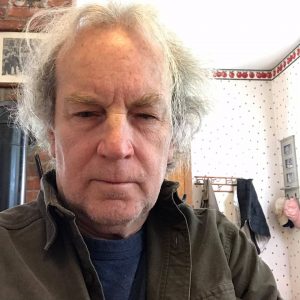There were roughly 10,425 people in the village of Glen Carbon, Illinois at the 2000 census. The name of the town means “Coal Valley.” Its expanse and luxuriant vegetation caused a traveling minister two centuries ago to call it the “Land of Goshen.” Glen Carbon now serves mainly as a residential community that has easy access to St. Louis due to its close proximity to the interstate highway. Wal-Mart was also attracted to this coal valley — but now that the retailer is trying to convert its discount store into a superstore, many residents in Glen Carbon have had enough. According to the Belleville News-Democrat, the idea of adding 81,000 s.f. to the existing Wal-Mart “isn’t a popular idea with some residents.” Wal-Mart is trying to add all this space inside their existing parking lot — whicih raises the question: why were they allowed to build such a huge parking lot in the first place? The Village Board has to decide whether or not to support the village Planning & Zoning Commission’s approval of the build out. To expand its store, which sits in the Cottonwood shopping center, Wal-Mart would squeeze out a movie theater, several other small businesses, and a church. A group called the Concerned Citizens of Glen Carbon has come out against the zoning variance required for Wal-Mart to expand. “I don’t see giving them another advantage to clutter up the neighborhood. All the other businesses have to comply with the (zoning) codes,” said one member of the Concerned Citizens. When it came time to vote, the Board split 3-3, until the Chairman weighed in on Wal-Mart’s side. (Two members were absent.) Joe Hagerty, Council Chair, said the developers “made a good case” that they did not need as many parking spaces as required. One of the Board members who said no, voted against Wal-Mart because he wanted the lot to have more green space. A village ordinance requires 5.5 parking spaces for every 1,000 square feet of floor space in a store. Wal-Mart wants to have 4.37 spaces for the total supercenter. According to the News-Democrat, the discount store’s parking lot is never full — even during the Thanksgiving/Christmas holiday season. The rest of the year, the lot is 40% empty. One neighbor who lives behind the store, protested that she moved to Glen Carbon because of its “uniqueness,” and that a larger Wal-Mart would impact the village feeling of the community. But all she could do was ask for a higher fence. “A 6-foot fence isn’t going to screen much. Could we get some consideration for a taller fence?” the neighbor pleaded. One of Wal-Mart’s engineers told village officials that Wal-Mart will pick up 40-50 new parking spaces by just storing its garden supplies, like mulch and fertilizers, inside. Wal-Mart currently stores these products outside in their parking lot, which means these substances are getting into the groundwater through stormwater runoff.
The owners of the shopping center, THK Properties of St. Louis, says any displaced business in the shopping center will be relocated.
This case illustrates the importance for activists to read their local zoning code carefully when a big box store is proposed. Calculate how many parking spaces are required under the local zoning code, and don’t let big box developers propose anything larger. What Wal-Mart will do is lay out a parking “field” much larger than they need, so they can come back in a year or two later with plans to put in a restaurant or a bank, or a gas station. Such incremental development spaces out the approvals, and what might not be acceptable all at once, is viewed as no big deal when done in smaller pieces. All that Glen Carbon is getting out of this expansion is another grocery store. Wal-Mart should never have been allowed to build a parking lot that is 40% empty most of the year. Their proposal now to fill that wasted space with more retail sprawl, should be appealed by residents to court if need be. One big lump of coal in Wal-Mart’s stocking for this wasteful project in Glen Carbon.

